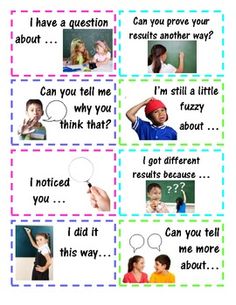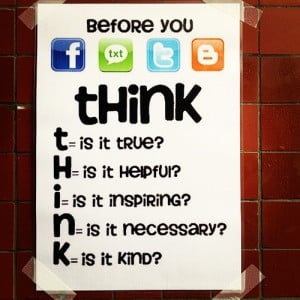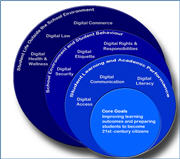![]() In keeping with last week’s mathematics theme I would like to share two of my favourite mathematics websites:
In keeping with last week’s mathematics theme I would like to share two of my favourite mathematics websites:
1. The first site is found on the Emily Stowe homepage. The “Numeracy Focus” link is on the left hand side of the page. The first group of links found on the “Numeracy Focus” page is about the importance of numeracy and why these skills are important to our students in today’s world. We live in a vast global community which is why we’ve linked to sites in many parts of the world. Children in every country are working on these same life skills. There are also links to documents on basic numeracy / math skills from our own Ontario Ministry of Education.
In the second section are online interactive math games and activities students will be using at school, but they may also come to this site and use these same activities to re-enforce their math skills at home. We hope you find this page informative and helpful. If, in your own Internet searches you find other good educational links we might include here, please send me those links. I’d be happy to include them.
http://www.tvdsb.ca/EmilyStowePS.cfm?subpage=245891
2. The second site, Mathies.ca hosted by Ontario Association for Mathematics Education (OAME), is designed for Ontario K – 12 students and parents. This website includes games, learning tools, activities, and additional supports for students to explore, build and enhance their mathematical thinking.
 There was a time when I believed good teaching meant knowing all of the answers. Now I would argue that good teaching is asking the right questions. This shift in thinking has influenced my responses to parents when I am posed with questions about how parents can support their children in learning mathematics at home.
There was a time when I believed good teaching meant knowing all of the answers. Now I would argue that good teaching is asking the right questions. This shift in thinking has influenced my responses to parents when I am posed with questions about how parents can support their children in learning mathematics at home. This week I was thinking about some of my favourite outdoor memories as a child.
This week I was thinking about some of my favourite outdoor memories as a child.
 I was at a Media Literacy event months back and the speaker shared the following rule for posting on social media. It is often one that I now share with students: “If you wouldn’t say it in front of your grandmother, then don’t say it in a text message.” This is an important message when learning to be a responsible user of technology, but, as I have recently learned, there is so much more to being a digital citizen than writing polite text messages.
I was at a Media Literacy event months back and the speaker shared the following rule for posting on social media. It is often one that I now share with students: “If you wouldn’t say it in front of your grandmother, then don’t say it in a text message.” This is an important message when learning to be a responsible user of technology, but, as I have recently learned, there is so much more to being a digital citizen than writing polite text messages.